- Hybrid drivetrain is extremely economical
- TNGA platform delivers good ride/handling balance
- Great warranty and servicing package
- It's just too expensive to purchase
- Interior belies the high asking price
- Missing standard equipment that overseas versions get
It only feels like yesterday that light cars were all the rage, touted as inexpensive, light on fuel, easy to park and manoeuvre but with many of the same features that larger cars had. Toyota’s first (Australian) Yaris hit showrooms in 2005, with the slogan of “all of Toyota’s big ideas in one small car” and was just one example of the many light cars on the market. With light cars falling out of favour, the majority of the Yaris’ competitors have disappeared from our showrooms. A whole host of factors have also meant that the era of the affordable light car is all but gone – the once $15,990 drive-away base model Yaris is now $13,000 dearer. Enter the 2023 Toyota Yaris ZR Hybrid.

With a declining marketshare, automakers aren’t investing in developing new light cars, with buyers having to settle with cars which are getting rather long in the tooth. The current model Yaris is the newest cars in its segment, with the current generation having launched in 2020 making it a relative baby compared to the current Mazda 2, which dates to 2014 and the current generation of MG3, which has been on the market since 2011. Does being the newest car in the class mean the Yaris is the light car to buy? Moreover, can a light car make sense in 2023?
Price & Equipment: 6/10
The 2023 Toyota Yaris range kicks off with the Ascent Sport petrol for around $28,300 drive away, and tops out with the ZR Hybrid variant, for around $37,000 drive away. The ZR Hybrid we spent a week with featured premium two tone paint, coming to a total of around $38,400 drive away.
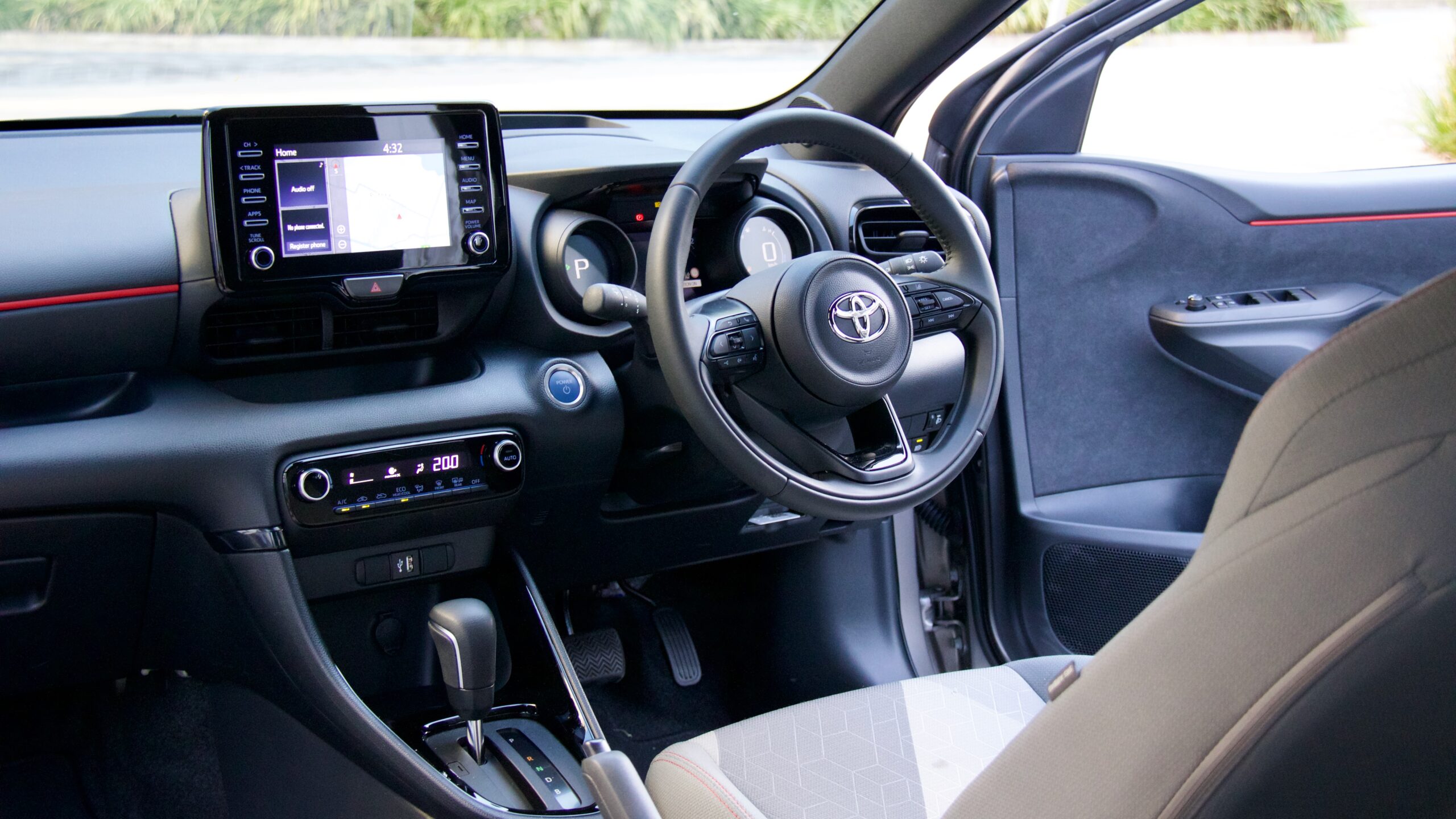



2023 Toyota Yaris ZR Hybrid standard equipment:
- 16” alloy wheels
- Dusk-sensing automatic LED headlights
- LED daytime running lights
- Rear LED fog lamp
- Heated and auto-folding mirrors
- 4.2 inch driver’s display
- Head up display
- Keyless entry and push button start
- Single-zone automatic climate control
- NanoX air purification
- Leather steering wheel
- Fabric seats
- 7.0-inch touchscreen
- Satellite navigation
- Am/FM/digital radio
- Wired Apple CarPlay and Android Auto
- Six speaker audio system
Safety equipment:
Receiving a five-star ANCAP rating in 2020, the Yaris is equipped with the following safety features:
- Eight airbags (Dual front, front centre, driver’s knee, dual front side and curtain bags)
- AEB (Autonomous Emergency Breaking) with pedestrian and cyclist detection
- Lane trace assistance with departure alert
- Front cross traffic alert with braking
- Rear cross traffic alert with braking
- Blind spot monitoring
- Speed sign recognition
- Radar cruise control
- Automatic high beam
- Reversing camera
- Front and rear parking sensors
- Rear auto braking




Options for the 2023 Toyota Yaris ZR Hybrid:
The only option available for the Yaris, is a choice of colour.
No cost colours:
- Glacier White
- Ebony
Premium paint options:
- Stunning Silver (+$593)
- Frosted White (+$593)
- Atomic Rush (+$593)
- Eclectic Blue (+$593)
- Lunar Blue (+$593)
- Bronx Bronze (+$593)
- Cherry Blossom (+$593)
- Coral Rose (+$593)
- Two tone Eclectic Blue and black roof (+$1,392)
- Two tone Bronx Bronze and black roof (on our test car, +$1,392)
- Two tone Cherry Blossom and black roof (+$1,392)
- Two tone Coral Rose and black roof (+$1,392)
Assessing the value proposition of the 2023 Toyota Yaris ZR Hybrid is a difficult task given there are no other hybrid light vehicles on the market – it’s either the Yaris or the highway. While we do think the hybrid drivetrain does add a lot of value, there is a fair bit of equipment which should be standard at the steep $38,400 price. We’d like to see a larger screen, a fully digital driver’s display, partial leather seats with heating, more USB charging points, rain-sensing wipers, a powered driver’s seat, a centre console, a more premium sound system and an auto-dimming rearview mirror would go a long way towards justifying Toyota’s asking price.
The Yaris’s competitors have been gradually reducing in number in recent years, but still includes the (petrol powered) Volkswagen Polo, MG 3, Suzuki Swift and Mazda 3. The Kia is no longer taking orders for the Rio, and the Baleno has reached the end of the line in Australia. The pickings are slim, but we think the Mazda 2 G15 GT and the VW Polo 85TSI Style are probably the closest competitors, despite not being hybrid vehicles. The Yaris is the newest car of the pack, dating from 2020, whereas the current generation Polo dates to 2017, and the current generation Mazda 2 was introduced back in 2014.



What the Mazda2 GT lacks in freshness, it makes up in bang for buck – at around $31,500 it undercuts the Yaris ZR Hybrid by nearly $7,000. For the extra money, the Yaris features the a hybrid drivetrain, a driver’s knee airbag and foot centre airbag, emergency steering assistance, front cross traffic alert, air-conditioning filter technology, a larger driver information display and automatic high beam. However, the Mazda 2 features rain sensing wipers, an auto-dimming rearview mirror, leather and suede upholstery, a 360 degree camera and an additional USB charging point.
The 2023 VW Polo Style (with Sound & Technology package) is priced much closer to the Yaris ZR Hybrid, at around $37,800 driveway. The Polo features plenty of equipment which is missing from the Yaris, including front fog lights, matrix LED headlights, dual zone climate control air-conditioning, a fully digital instrument cluster, a larger eight inch instrument cluster, wireless Apple CarPlay and Android Auto, a wireless phone charger, an additional three USB charging points, ambient interior lighting, an auto-dimming rear-view mirror, heated and auto tilting side mirrors, lumbar adjustment for the driver’s s seat, rain-sensing wipers and a premium audio system. The Yaris on the other hand has a driver’s knee airbag, blind spot monitoring, rear cross traffic alert, road sign recognition, front cross traffic alert, nanoX air-conditioning filtering, a heads up driver’s display and emergency steering assistance.
We think plenty of buyers will look at the price of the Yaris ZR Hybrid and see far better value in a small SUV – for example a Toyota Yaris Cross GXL Hybrid costs around $200 less, yet has most of the equipment, but offers a much bigger boot, bigger rear seat and the benefits such as a high driving position that keeps SUVs very popular with drivers.
Performance & Economy: 9.5/10
Powering the 2023 Toyota Yaris ZR Hybrid is the smallest example of Toyota’s esteemed petrol electric setup in Australia. The petrol part of the drivetrain is a 1.5-litre three-cylinder Atkinson Cycle engine, producing 67kW of power and 120Nm of torque. The electric motor individually produces 59kW of power and 141Nm of torque, supported by a 4.3Ah lithium Ion battery. The combined power of the hybrid system is 85kW (Toyota doesn’t quote a combined torque figure).
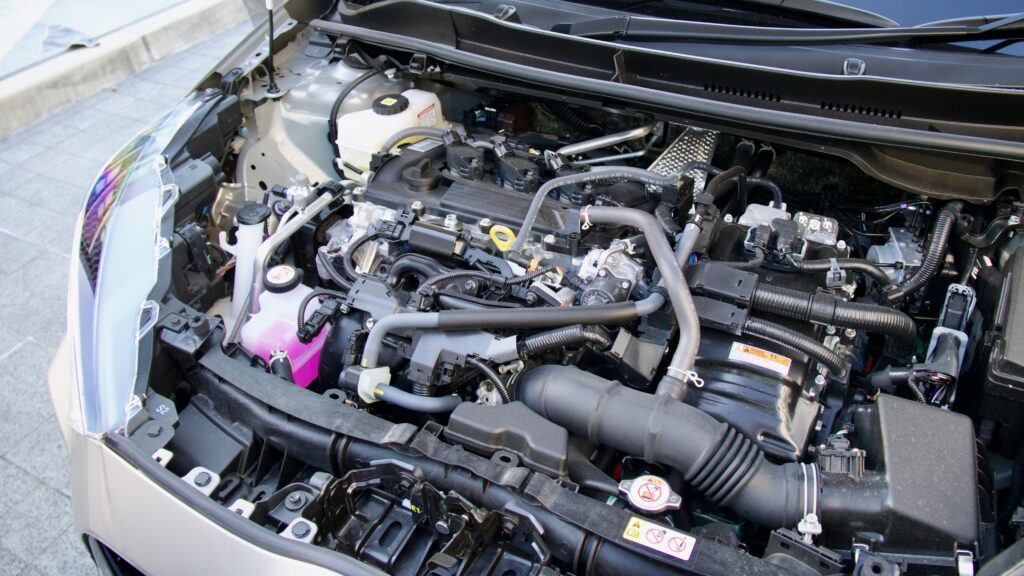



The Yaris ZR Hybrid is no sports car, but it’s peppier than one would expect. The instant torque from the electric motor helps to make the Yaris feel nippy, especially around town – which we see as the natural habitat for small cars. Even on the highway, the Yaris Hybrid gets up to speed fairly well – things do become less refined, but highway speeds are more than achievable. The Yaris will often switch off the petrol engine across flat (or downhill) sections of highway. In general making considerate use of the accelerate can allow one to stay on electric power up until around 35km/h.
The hybrid drivetrain in the the Yaris is less refined than in larger Toyotas – which is not to say it’s necessarily unrefined, but there seems to be less sound deadening which allows the petrol engine to be heard in the cabin more than say in the Corolla or Camry. Part of this does add character to the Yaris – the unique sound of a three pot makes the Yaris Hybrid more character filled than its larger siblings. Overall though, refinement is more than acceptable and this is mostly thanks to Toyota’s ‘E-CVT’ transmission which manages the output two motors and sends power to the two front wheels. The main downside to the transmission is that pressing down hard on the throttle elects a characteristic CVT drone and thrashiness, but for the most part it does a good job.



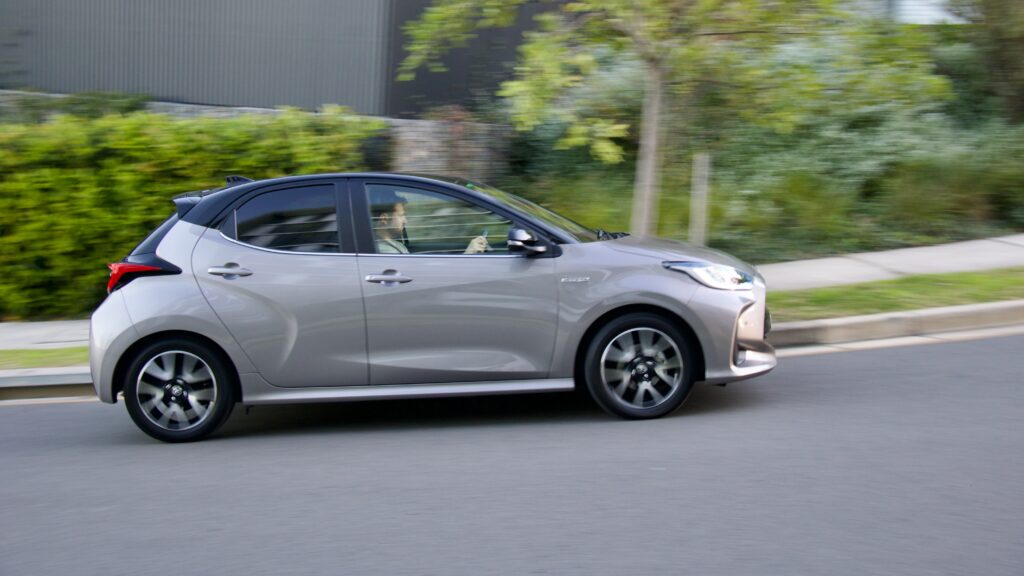
Toyota says the Yaris ZR Hybrid will use 3.3 litres of petrol per 100kms – we were able to nearly match this across a week of mixed highway and urban driving (admittedly while trying to run on electric power as often as possible) which returned a figure of 3.5L/100kms – still very impressively low fuel usage. With a full 36-litre fuel tank, and the economy we achieved, a range of around 1000kms should be possible. The Yaris will happily run on 91 RON unleaded fuel, which combined with the impressive fuel economy, will help to keep costs down.
Ride & Handling: 8.5/10
The Yaris was never really known for its handling chops, but as we found out back in 2020, the flick of Toyota’s TNGA magic wand has gone a long way towards dynamically transforming the Yaris. While the steering is decidedly light, helping Toyota’s small hatch to feel at home in the often tight confines of the city, it doesn’t come at the cost of feel – we were impressed with both the feedback and accuracy.



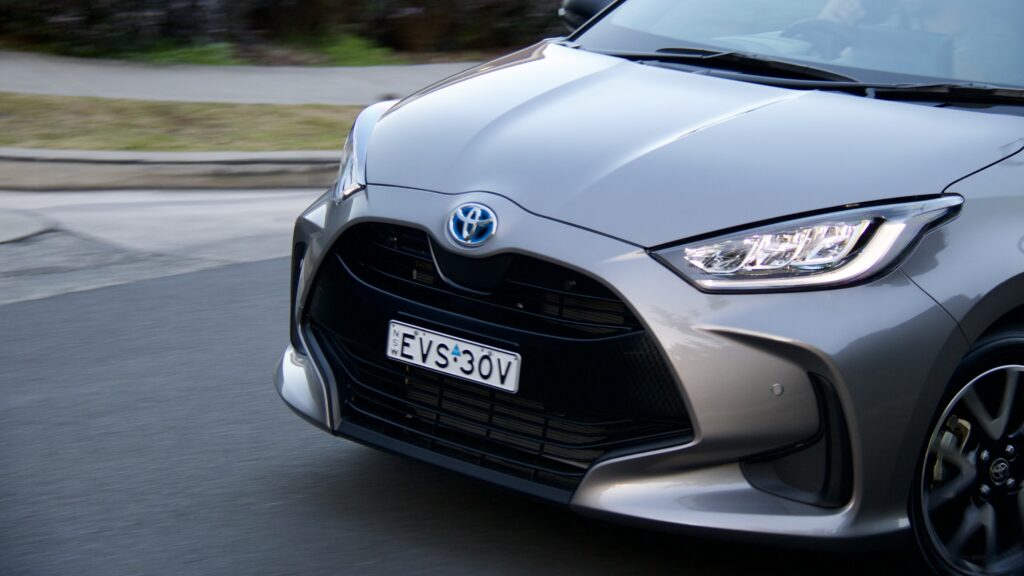
The low centre of gravity delivered by the TNGA platform helps the Yaris to stay fairly glued to the ground through corners – it’s no GR Yaris, but yes it is possible to have a little fun throwing the standard Yaris into corners with surprisingly minimal body roll. Most drivers Though it makes do with a simple torsion beam rear suspension setup, the Yaris rides quite well for a car of its size, soaking up most of what our (often) less than stellar Sydney roads could throw at it it and settling well.
The Yaris has a sense of maturity in it’s ride/handling balance, it’s safe and predictable for those who want to get from A to B, but those who like a bit more driving engagement will be pleasantly surprised. Engine noise is fairly well insulated from the cabin until the rapid acceleration is required, when the eCVT becomes droney and the engine gets a bit loud – though we thought the 3 cylinder growl was quite characterful. Wind noise is also fairly insulated – road noise at higher speeds and on coarser roads is less muted making the lack of noise dampening somewhat obvious. It’s not disastrous, but not as quiet as we’d have liked.
Interior & Practicality: 7/10
Stepping inside the cabin of the 2023 Toyota Yaris ZR Hybrid, it’s definitely a higher quality and less conservative space than the last generation’s decidedly plain interior. The dashboard is covered in a soft touch material, and door armrests and part of the door cards, though there is a fair bit of hard plastic throughout – we’d like to see some more soft touch materials used at this price point. Still while hard and scratchy, the materials felt durable and the interior is, in typical Toyota fashion, well screwed together. We found the switchgear to feel very well dampened with great tactile feedback.
Storage throughout the cabin is a mixed bag – there are some handy spaces such as a phone sized cubby ahead of the gear shifter, another cubby under the information system and a tray in front of the driver, there is no covered centre console storage – occupants have to make do with a tiny uncovered space and the door bins aren’t overly generous. There are centre cupholders (in addition to those in the door bins) and a reasonable glovebox. We really wish Toyota would reconfigure the centre console to have covered storage.

The front seats of the Yaris are quite comfortable with good bolstering and support – we’d like to see more adjustment for the driver’s seat however – six ways of adjustment would be ok for a base variant but we’d expect better in a near $40k car – the same goes for the seat covering – while the fabric is patterned nicely and feels of a high quality, we’d expect leather or suede at this price point. As we touched on before, the lack of covered centre console means there is no centre armrest which we don’t think is acceptable in a car of this price.
Ahead of the driver is a multi display digital instrument cluster, with a 4.2-inch information display flanked by a digital speed display with gauges and a gear display with hybrid tachometer. While it’s not a fully digital display, it does the job well and feels fairly modern, though a full sized display cluster would be nice. We appreciated the large heads up display, which supplemented the cluster well. Visibility for the driver is fairly good, with a reasonable sized rear windscreen, though the rear quarter panels can be restrictive. The reversing camera is acceptable, though the quality isn’t fantastic – we’d like to see the new camera Toyota has been introducing in some of its recent vehicle spec bumps.

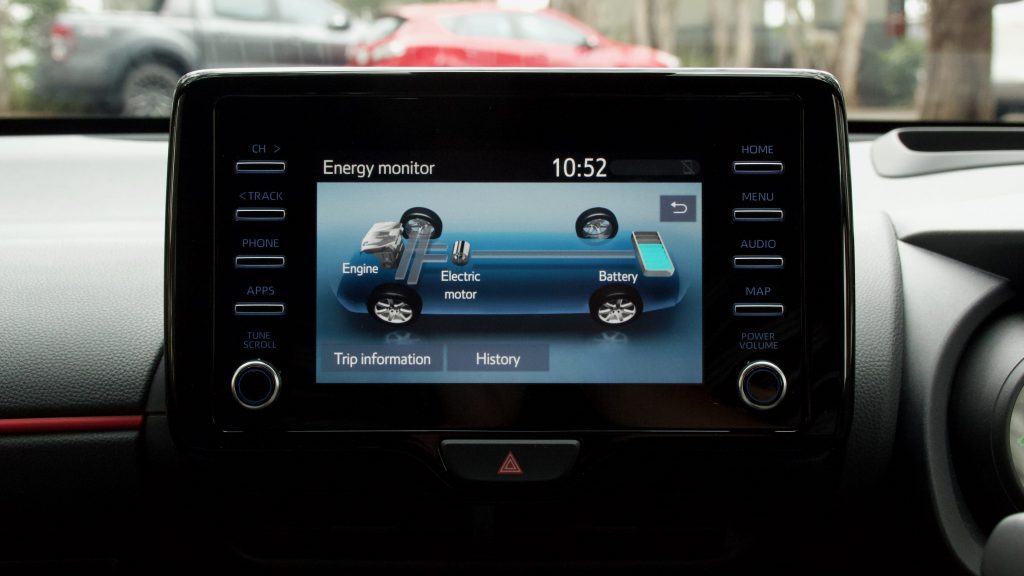

Sitting above the centre of the dashboard is a 7.0-inch touch screen information system, which features wired Apple CarPlay and Android Auto, AM/FM/digital radio and satellite navigation. The screen is one of Toyota’s last generation units and while it’s serviceable, it’s quite dated. The screen itself feels tiny, not helped by the substantial screen bezel – unfortunately it dates the cabin. The physical shortcut buttons on the other hand are very much appreciated, something that Toyota’s newer generation systems are missing. We’d love to see Toyota put a much bigger and modern touchscreen screen in the Yaris as it would do a lot to modernise the interior and improve the infotainment experience. The six speaker system is perfectly acceptable, while there is only a single USB C charging port up front, and a USB A charging/information input port.
Moving into the second row of Toyota’s petite hatch highlights one of the quirks of the current Yaris – it’s actually smaller than its predecessor, bucking the trend of cars continually gradually growing in size. The back seats aren’t last word in spaciousness – head room, leg room and knee room are just enough for adults, though taller adults will struggle – three adults will also struggle to fit across the bench. It’s clear that the back seat Yaris is more suited to younger children, or for those who only occasionally use the rear seat. Amenities for rear seat passengers are rather thin on the ground which doesn’t help the case for the second row – there is a single map pocket and bottle holders in the door…. Yep that’s it! No charging points, centre armrest or cupholders to see here.




The boot of the Yaris comes in at a serviceable 270-litres – over 60 litres larger than the larger Corolla Hybrid hatch. Compared to the Mazda 2, it’s 20 litres bigger, though it’s a fair bit smaller than the 351 litre boot capacity of the Polo. The rear seats split 40:60 to create a much larger space – though Toyota doesn’t publish a capacity for the full luggage space. Under the boot floor sits a space saver spare.
Service & Warranty: 9.5/10
Toyota covers the Yaris with a five year/unlimited kilometre warranty, which is extended to seven years for the drivetrain if scheduled servicing has been undertaken. 10 years of warranty coverage for the hybrid battery is offered if an annual hybrid battery health check is carried out as a part of the scheduled servicing. Both VW and Mazda match the five years/unlimited kilometre warranty of the Yaris, with the Polo and 2 respectively, but neither offer any additional cover for the drivetrain.

The Yaris has a capped price servicing which covers the first 75,000kms or 5 years (whichever comes first). Servicing over this period is capped at a total of $1225. Servicing is due every 15,000kms or 12 months – again whichever comes first. The VW Polo and Mazda 2 both have the same service intervals as the Yaris, but servicing over the same five-year period costs $3,095 for the VW, and $2,116 for the Mazda. Where Mazda and VW do come out on top, is with their included roadside assistance programs. While Toyota doesn’t include any free roadside assistance with the Yaris, the 2 has five years assistance included, and the Polo has one year roadside assistance included that’s extended by a further 12 months with each dealer service.
The 2023 Toyota Yaris ZR Hybrid DiscoverAuto Rating: 8.1/10
Amongst a backdrop of light cars disappearing off the Australian new car market, we’re glad that Toyota developed an all new Yaris. Bringing a hybrid drivetrain to its smallest car locally has resulting an extremely economical car with real world fuel economy, and the move to the TNGA platform has created a car that handles and drives surprisingly well. The combination of the low fuel usage with a generous warranty/servicing package has resulted in an inexpensive car to run. Unfortunately, the same cannot be said for the purchase price.

We’re sad to say that the high price of the Yaris, and especially the ZR Hybrid that we tested will limit the number of people who’ll buy what is quite an impressive car. The value equation just doesn’t make sense, and while the Yaris is the only Hybrid vehicle in its class, the steep outright cost will deter many drivers. The amount of missing equipment at the price point doesn’t help, and neither does the interior which doesn’t feel quite up to scratch for a near $40k car. We’ve got no doubt buyers will look at the Yaris, then look at small SUVs which offer lower prices and comparable equipment prices, with more space and see more value in the latter option.
We’d love to see Toyota make the Yaris a more compelling option by dropping the price and increasing the equipment levels – we think that it’s too good of a car to be compromised by poor value.
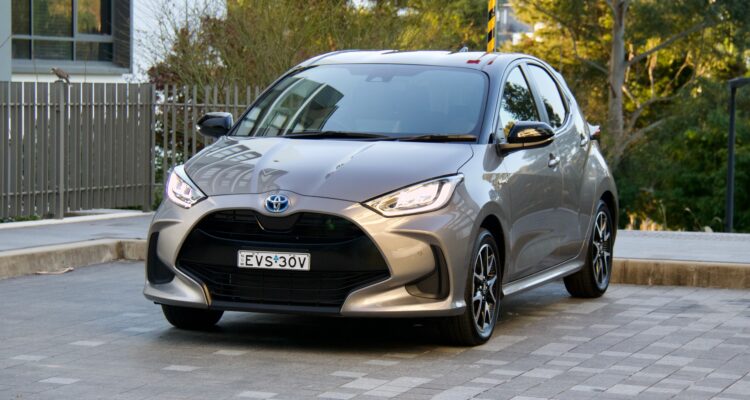
Leave a Reply